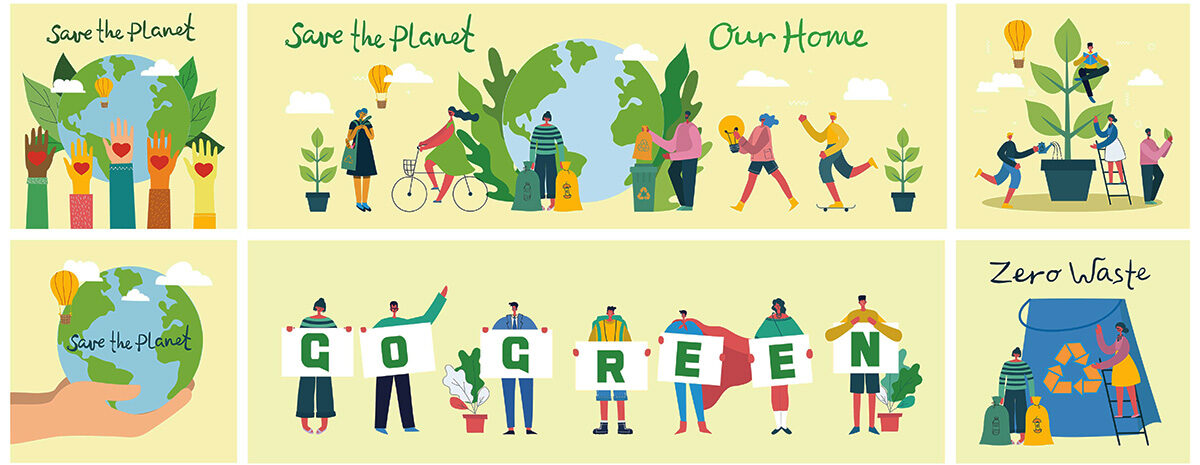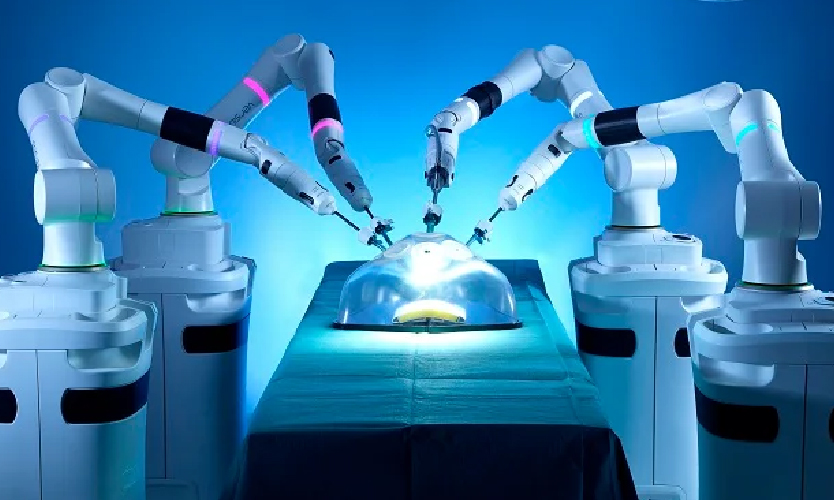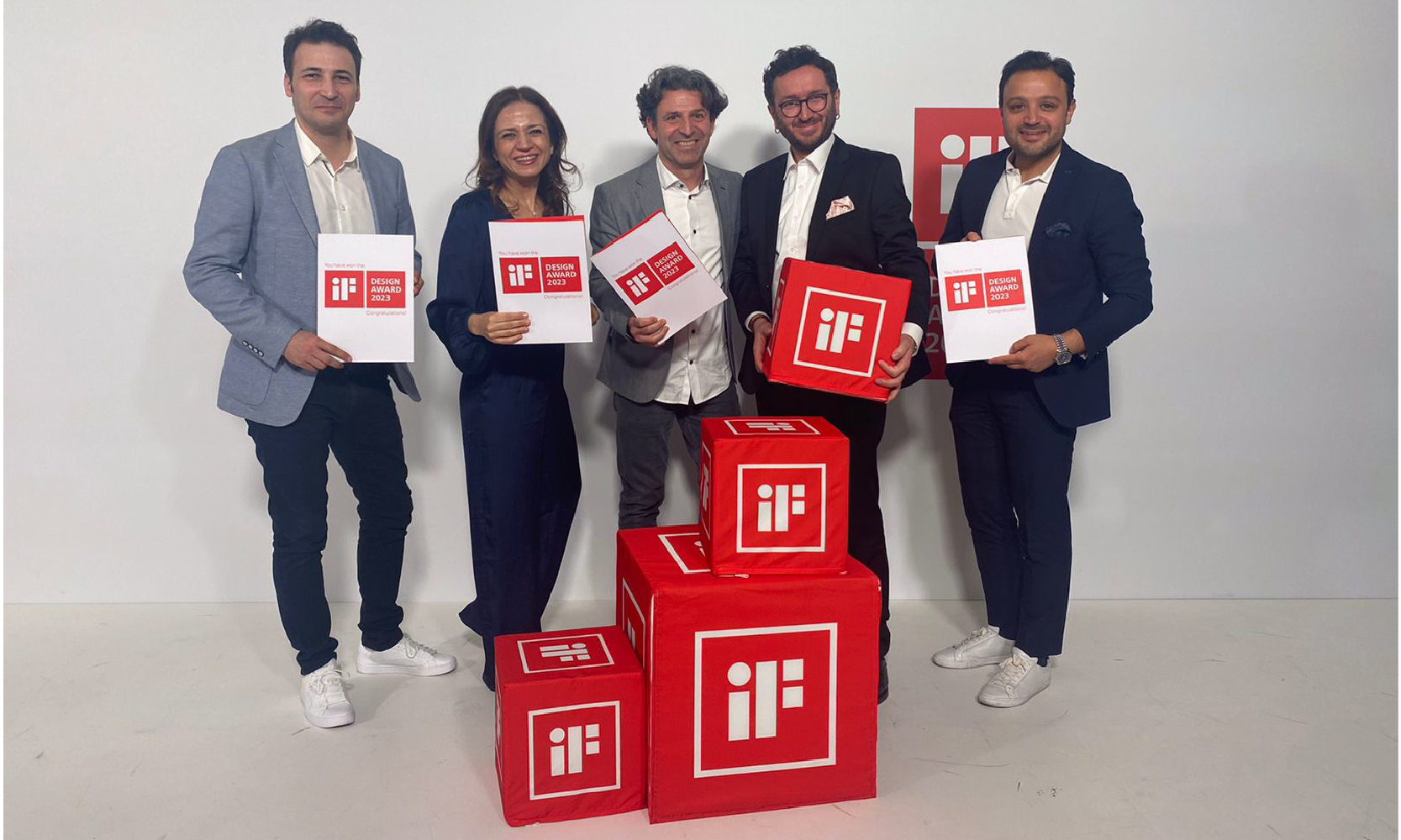Trends are now influencing users for shorter and shorter periods. It is not surprising to see shorter trend cycles in a time diverse cultures are just a click away. Nevertheless, some general themes, also called the megatrends, stick around for decades. As trends pass by quicker, megatrends and their influences become harder to predict. Nobody was able to predict an upcoming global pandemic. Without a doubt, the pandemic has changed even the most basic interactions in our everyday lives. One thing about the future is certain though: the imminent threat of global warming. Some effects of global warming awaiting us in 2030 are depletion of natural resources and shifts in global population. It for this reason the megatrends of 2030 focus on creating a greener word. As the world moves towards an greener approach what will be the role of design industry in this movement?
Megatrends of 2030: Working For A Greener Future

Data for a Greener Future
For the last ten years’ experts have been referring to data as the new oil. Similarly, today we can say that data is the new soil; it has become our newest principal resource. Just like soil, we need know how to work with data to reap its benefits. In contrast to soil, information in data form is unlimited and unparalleled. Imagine the future in which such a powerful resource is environment friendly. A future with data clinics, where old data is diagnosed and fixed with algorithms; where fixed data alone leads to innovative solutions. A future like this is certain with the threat of global warming, it is perhaps even the driver for a greener future.
Luckily, we can predict seven megatrends for 2030. All of the trends will focus on creating a greener future. Keywords of the decade will be resource depletion, demographic shifts, global policies, transparent businesses, clean tech and urbanization. Without a doubt, the megatrends of 2030 will be shaped by data-based technologies and design. Keeping up with megatrends will secure designers’ positions in the world market.
Megatrends will boost green innovation in an unforeseen scale. Researchers will invent solutions with the use of data-based technologies. In addition to innovation, data-based technologies will create white collar job opportunities. Unlike, the rise of white-collar jobs, blue-collar jobs, which require brute force and repetitive action, will decrease because of automation.
Below, we reviewed the Megatrends of 2030 from a designer’s point of view.

1. Resource Concerns
For the last 50 years, the industry created as many products, as cheaply and as quickly as possible. Unfortunately, this trend has had significant negative effects on the environment. Moreover, it has exhausted many natural resources. Overconsumption, coupled with the lack of circular production has created a big concern. According to experts, in the next 10 years, lack of virgin resources will be the biggest problem facing the industry.
Without a doubt, a lack of resources will bring about production problems. As natural resources diminish, prices will skyrocket. At that point reusing processed materials will be cheaper than using virgin materials. In the future, many products will consist of ready-made parts. As a result of the ready-made movement, designers will have to invent new business and production models.
2. Population Shifts
“The world population is expected to reach 8.4 Billion people in 2030.” –United Nations
The world population will increase more than ever, thanks to the advances in the medical field. Furthermore, an average person’s life expectancy will increase due to accessibility of medical care, resulting with a rise in the elderly population. Solving the problems of this new user base will become the goal of designers. In this period, innovative solutions created in the light of other megatrends will guarantee a smooth cultural transition.
Future designers will solve problems for a larger user base. Luckily, they will be aided by data-based information in their processes. Use of data-based information will result with more efficient end products designed for contemporary problems.
3. Transparent Businesses
Thanks to technological advances, users will be able to access all kinds of product information. Easy access to information will change consumption patterns. Users will start shopping from brands whose policies they agree to. Subsequently, the user base of unethical companies will shrink. Users will demand companies to treat their workers well, decrease their carbon footprint and offer non-toxic alternatives. Designer’s innovative solutions will help businesses maintain their user base by meeting these new ethical demands.
Sustainable solutions such as electric cars, reusable products and sharing systems will be designed. As interest in environmentally friendly consumption increases, green production will outline a new moral code for designers.

4. Policy Changes
Today, policies concerning international problems do not met the needs of people. We need new policies to solve problem like global warming. While it is not possible to predict which, the world is entering a period of either increased global unity or total national isolation. In a future full of political uncertainty, decisions of businesses regarding the environment will be as important as national and international decisions. Designers working in green businesses will pave the path to a green future as much as politicians.
Objective information provided by data will be used as a decisive element in policy-making. In the future, data collected from users will guide world policies.
5. Clean Technologies
Renewable energy will become cheaper to use as technology advances. It will be preferred in production because of its green nature. In addition to decreased green energy costs, the cost of fossil fuels will increase. This change in pricing, will be due to newly introduced national quotas. Because of fossil fuel quotas, the renewable energy industry will boom. Designers will create products which use renewable energy and adapt older products to use renewable energy.

As resource concerns grow, designers will alter old products to create ready-made solutions. The definition of reuse will broaden to include new products made from already existing parts.
6. Urbanization
The growing global population will move to cities. Without a doubt, cities with failing infrastructures will now have to face this new challenge. At the same time, cities will have to invest in sustainability projects such as urban farming and smart living to keep up with green lifestyles. In the future, designers will play a key role in creating innovative solutions for livable cities.
Newly formed mega-cities will be optimized by using data-based technologies. moreover, information technologies will function as data collection tools to improve living areas.
7. Global Warming
We will start to see the devastating impact of global warming in our daily lives as humans. Glaciers will melt, sea levels will rise and ecosystems will disappear. As time passes the severity of ecological disasters will increase. Eventually, production chains will get affected by global warming. Farmlands will disappear, regional climates will change. Nations will need to spend large sums of money to battle the effects of climate change. Consequently, climate refugees will have to leave their countries to find livable places. Nations and businesses will need innovative approaches to solve climate problems.
In the future, global warming will become more intertwined with production industry. Even today, it is important for all decision-making mechanisms, from nations to small businesses, to take precautions. Because of its vast influence, it is the mission the design world to act as a catalyst. Soon, green design strategies will become the most important factor in battling global warming.
A Greener World

To conclude, companies which follow green trends and invest in sustainable alternatives will succeed in the future global market. Mega-trends of 2030 will result with new user bases, needs and services. When the destructive effects of global warming start affecting our daily lives our consumption patterns will shift towards sustainable practices. Environmentally aware consumers will demand long lasting, high quality products. If you too would like your products to compete in the international market, you could start this process by integrating mega-trends into your business strategy.
 Primitive Use of Artificial Intelligence: A Look from Past to Present
Primitive Use of Artificial Intelligence: A Look from Past to Present  The Future of Medical Design
The Future of Medical Design  A Night Full of Prizes: Celebrating 4 Wins at iF Design Awards 2023
A Night Full of Prizes: Celebrating 4 Wins at iF Design Awards 2023